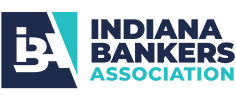As we are all aware by now the Final Rule for the 1071 Small Business Data Collection was issued March 30, 2023.
Many financial institutions are questioning where and how to start the process of identifying the small business loans to be counted. The final rule provides three methods to determine if a small business loan should be counted; however, before making that determination, we need to first understand what is considered a “small business”.
What is a small business?
The final rule’s definition of “small business” incorporates, in part, the Small Business Administration’s (SBA) definition of “small business concern.” A “small business” is a business concern that had $5 million or less in gross annual revenue for its preceding fiscal year. Thus, if a business had more than $5 million in gross annual revenue for its preceding fiscal year, it is not a small business.
The definition also provides that a business concern may take several different legal forms, including a trust, sole proprietorship (including individuals), partnership, limited liability company, corporation, joint venture, or cooperative. However, if a joint venture contains more than 49 percent participation by foreign business entities it would not be considered a small business under the 1071 rule.
In addition, financial institutions are not required to collect and report data for not-for-profit applicants, because they are not “organized for profit” and are thus not a “business concern.” Moreover, the CFPB expects that applications from foreign businesses will fall outside the scope of the rule’s data collection and reporting requirements unless they have a place of business located in the United States and they either operate primarily within the United States or they make a significant contribution to the U.S. economy through payment of taxes or use of American products, materials, or labor.
What is a covered transaction?
A covered origination is a covered credit transaction that the financial institution originated to a small business. Refinancings can be a covered origination; however, extensions, renewals, and other amendments of existing transactions are not considered covered originations, unless the transaction includes an increase in the amount of credit extended.
Financial institutions need to understand the difference between a refinance and renewal and may have to adjust their processes. The CFPB final rules state that a refinance occurs when an existing obligation is satisfied and replaced by a new obligation undertaken by the same borrower. Remember, when we speak of the “obligation” we are referring to the note. The final rule also states the refinancings or applications for refinancing must be assigned a different identifier than the transaction that is being refinanced.
What transactions are not included?
The following transactions are excluded from count as they are not considered covered credit transactions under the final rule even if they satisfy Regulation B’s definition of business credit:
- HMDA-reportable transactions.
- Trade credit, which is a financing arrangement wherein a business acquires goods or services from another business without making immediate payment in full to the business providing the goods or services.
- Insurance premium financing, which generally is a financing arrangement wherein a business agrees to repay a financial institution the proceeds advanced to an insurer for payment of the premium on the business’s insurance contract and wherein the business assigns to the financial institution certain rights, obligations, and/or considerations in its insurance contract to secure repayment of the advanced proceeds.
- Public utilities credit as defined in Regulation, 12 CFR 1002.3(a)(1)
- Securities credit as defined in Regulation B, 12 CFR 1002.3(b)(1)
- Incidental credit as defined in Regulation B, 12 CFR 1002.3(c)(1), but without regard to whether the credit is consumer credit, is extended by a creditor, or is extended to a consumer.
- Factoring and leasing.
- Consumer-designated credit used for business or agricultural purposes.
- Loans to government entities and non-profits.
- Purchases of a credit transaction, purchases of an interest in a pool of credit transactions, and
- Purchases of a partial interest in a credit transaction (such as through a loan participation agreement).
How to count the covered transaction?
The CFPB final rule on 1071 small business data collection provided three methods to determine the small business count for each year. Below are the methods.
The first method is the use of a financial institution’s loan origination system (LOS) that may already record the revenue amount and internal loan codes in their LOS which can provide reports to quickly identify covered transactions towards the final count for each year. In addition, many CRA LAR reporters can assess their count due to the volume reported on the CRA LAR as well as revenue amounts if captured by the CRA LAR software.
But what should smaller financial institutions do if revenue or any other information is not readily available to isolate the covered transactions in their loan operating systems? TCA recommends utilizing the CALL report codes, since every bank must submit a quarterly report and utilize any internal loan codes to identify the business loans.
There are various business purpose CALL Report codes such as 1.a2, 1.b, 1.e.1, 1.e.2, 3, and 4. However, it will be the Bank’s responsibility to read the loan approvals to ensure the loan qualifies as a covered transaction as well as ensuring the accuracy of their CALL report.
The Bank must also identify business purpose closed-end residential mortgage loans that are not HMDA reportable. These small business loans can be identified by the CALL Report codes of 1.c.2.a and 1.c.2.b and 1.d along with the bank’s core system codes for purpose, class, and other identifying lending codes. The loan approval document may provide detailed information as to how the loan proceeds were used. The financial institution may also create a report with the CALL report codes along with the appliable core system fields with filters to identify the business purpose loans that are secured by residential dwellings.
Lastly, the CALL Report codes, and core system codes can assist in identifying consumer credit designated loans. CALL report codes for consumer lending products are HELOC, 1.c.1 and 6a, 6b, 6c and 6d which identifies these products as personal, family, or household purposes. The bank can create a report to identify these loans which are to be excluded.
If the financial institution did not collect sufficient information to determine which borrowers were small business pursuant to the final rule, the financial institution can determine the number of covered originations for 2022 and/or 2023 by using the second methodology provided by the CFPB. Such institutions may count covered originations for the last quarter of calendar year 2023 (October 1 through December 31). This loan count would then be quadrupled (multiplied by four) to annualize the number. This annualized number will then be utilized as the loan count for 2023 as well as 2022 to determine institutional coverage.
A third method is to assume that all of the covered credit transactions that it originated during a calendar year were made to a small business for purposes of determining institutional coverage and the financial institution would adhere to the compliance date tier pursuant to the final rule.
Is there a best practice for Compliance Officers?
Once a financial institution has made the determination of volume for 2022 and 2023, be sure to document the process utilized to identify the small business loans and the corresponding methodology. The results will identify the rationale as to whether the financial institution will or will not be a reporter. This should be provided to the Compliance Committee to memorialize the process and methodology in the Compliance Committee minutes. Documentation should also include required next action steps. The steps should include continued monitoring on an annual basis, especially for those that have not reached the threshold as of 2023. Results of monitoring Small Business loan volume should be reported to all stakeholders to keep them informed of when the threshold has been realized and the requirement to start the data collection process.
Although outside of the Compliance Officers realm, you may want to consider having the appropriate individual(s) do a review or validation of your CALL Report to ensure that loans are coded accurately.
Hopefully, you have been meeting with the various stakeholders at your bank and have a rough project plan in place. If not, it’s time to start those meetings and develop an in-depth implementation plan. Stay tuned for additional articles and resources to help your financial institution find “A Better Way” to plan and implement your Small Business LAR data collection process.
As always, we are here to help! TCA is “A Better Way” to help you comply with the Small Business LAR.






